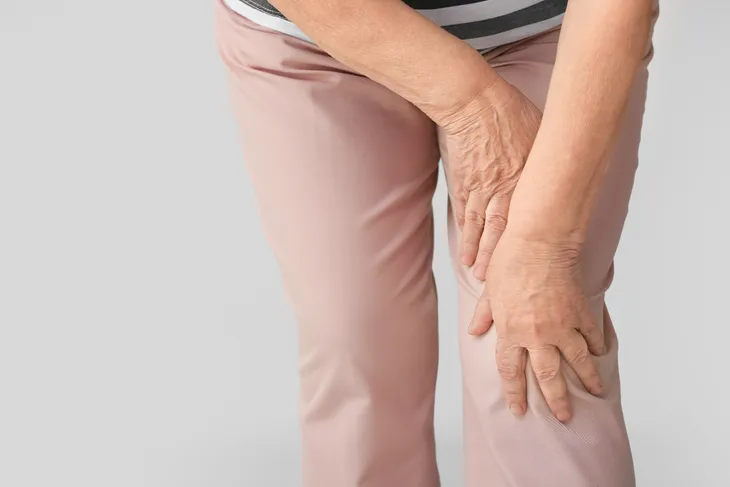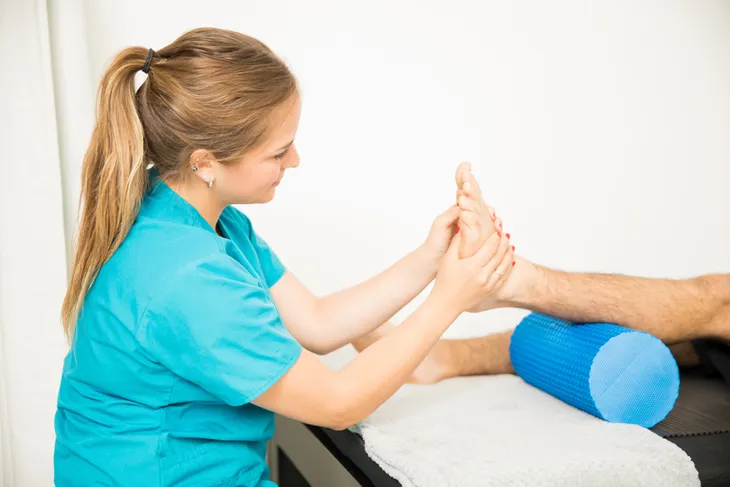Rheumatoid arthritis is a type of chronic arthritis that affects approximately 1.3 million Americans. This inflammatory arthritis and autoimmune disease typically affects weight-bearing joints symmetrically (or on both sides of the body) and most commonly in the knees, hands, wrists, hips, or ankles.
The painful inflammation of the condition can often lead to an overwhelming loss of control and even depression. To help manage the pain, improve quality of life, and take back control, here are fifteen diet and exercise tips to help you manage rheumatoid arthritis…
1. Stick to Low Impact Activities
Doctors recommend low impact exercise to rheumatoid arthritis patients to improve energy, mood, and pain relief in inflamed joints. However, stick to physical activities that are gentle on weight-bearing joints—such as walking, swimming and aqua-aerobics, and cycling on a recumbent bike.
2. Eat Your Omega-3s
Numerous medical studies link fish oil supplements with relieving inflammation, which is fantastic news for those with rheumatoid arthritis! That’s why omega-3 acids taken in oral fish oil supplements can ease joint inflammation and lower your risk of cardiovascular disease.
3. Protect Weight-Bearing Joints
Protecting your joints should always be a priority—even when you’re not feeling any pain. So that means when you do routine tasks, like shovel, lift a small child, take groceries from your car, and get out of bed in the morning, think: “How can I do this in the gentlest way possible?”
4. Butt Out
Smoking has been linked to worsening the symptoms of rheumatoid arthritis and aggravating joint pain and damage. So do yourself a solid and butt out for your health!
5. Do Some Yoga
The gentle practice of yoga focuses on whole-body and mind wellness, which makes it perfect for rheumatoid arthritis sufferers and highly recommended by the Arthritis Foundation.
6. Go Mediterranean
Medical studies show that rheumatoid arthritis sufferers who consume a diet similar to those in the Mediterranean, one that’s rich in fruits, vegetable, cereals, legumes, and olive oil, lessened joint pain and experienced improved quality of life.
7. Stretch Like Gumby
To extend your pain-free days, doctors recommend starting each day with a good stretch all of your joints. Talk to a qualified physician or physical therapist about specific stretches to help manage your arthritis pain throughout the day.
8. Eat More Fish
Fish oil can ease pain and inflammation in fresh form just as much as in capsule form. So incorporate a few fresh or frozen fillets of salmon, tuna, or mackerel into your weekly diet to help ease inflammation and joint pain.
9. Blend Mind and Body
Mind-body therapies—such as guided meditation, qigong, tai chi, and biofeedback—will help you manage arthritis pain management with deep breathing, flexibility, and focusing the mind.
10. Go Veggie
Meat has been linked to aggravating stiff joints and inflammation, so going vegetarian, even a few days per week, can greatly reduce pain, morning stiffness, and protect joints thanks to a boost in antioxidants found primarily in green veggies.
11. See an Occupational Therapist
Occupational therapy can compliment a regular exercise program for rheumatoid arthritis sufferers, by helping you live independently, identify and ease specific problem joints, and provide alternative and safe movement.
12. Boost That Vitamin E
Studies have shown that vitamin E supplements can help lessen joint pain and slow the damage that occurs as the disease progresses.
13. Pump Iron
You don’t need to lift heavy in the gym to get results either. A few days per week of low impact strength training can improve muscle strength, functional ability, and mood of rheumatoid arthritis sufferers.
14. Know Your Food Sensitivities
It’s common for rheumatoid arthritis sufferers to have food sensitivities–particularly to dairy and shrimp. If unsure, try an elimination diet, which removes potential “problem foods” from your diet to see if you experience fewer RA symptoms.
15. Try Physical Therapy
Many RA patients are referred to a physical therapy over the short term. A PT can help you develop a safe and effective workout plan to ease pain, increase mobility and strength, and avoid harmful movements that will aggravate your arthritis symptoms.


















